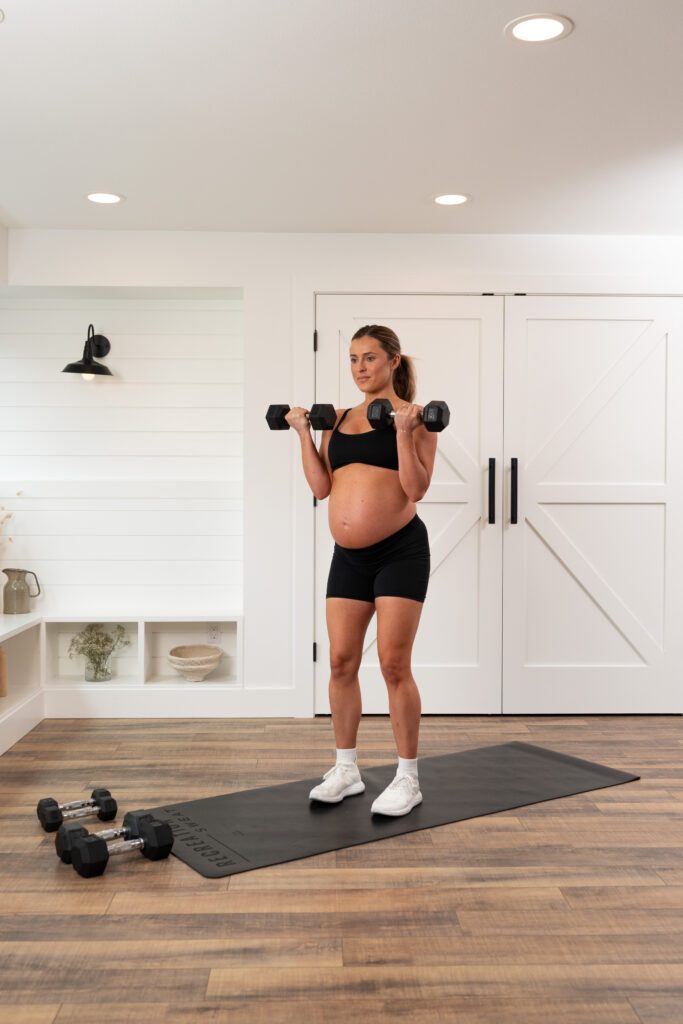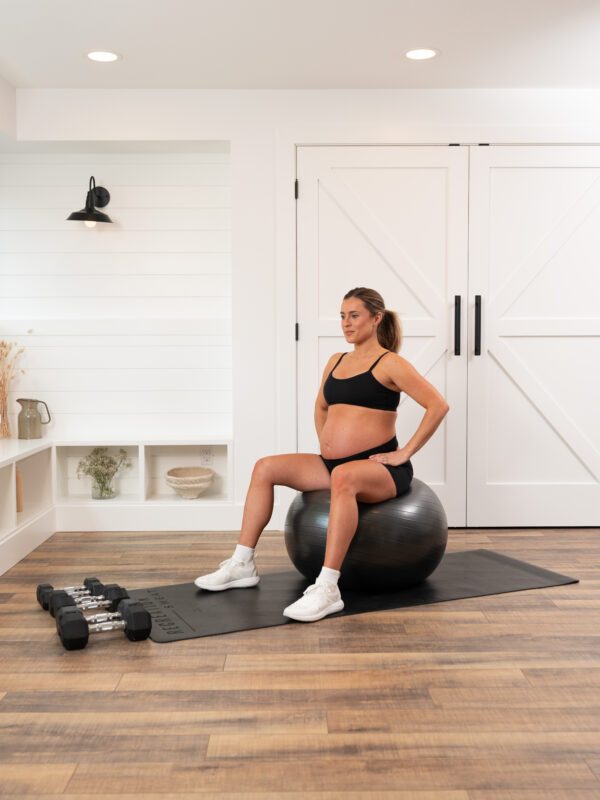
One of the requests I’ve gotten most about my upcoming GOOD // SWEAT Pregnancy guide is more information around prenatal fitness dos and don’ts. It’s so important to be well informed on what exercises to avoid while pregnant and why. I’m so passionate about helping you feel your most confident, whether that’s stepping foot in a gym for the first time or navigating exercise while pregnant. GOOD // SWEAT Pregnancy is jam-packed with educational, science-backed prenatal fitness information to help you move confidently while growing your baby.
Prenatal Fitness General Guidelines:
- Modify for Comfort: Always adjust the intensity, range of motion, and duration of exercises to match your current energy levels and comfort.
- Stay Cool: Avoid exercising in hot, humid conditions, and wear breathable clothing to prevent overheating.
- Listen to Your Body: If you experience any discomfort, pain, dizziness, or shortness of breath, stop immediately and modify the exercise as needed.
Exercises To Avoid While Pregnant + Modifications
Below is a list of exercises commonly avoided during pregnancy, along with some general modifications:
1. Lying on Your Back (Supine Position)
- Avoid: After the second trimester, lying flat on your back can compress the vena cava, a major vein that carries blood to your heart, causing dizziness and reducing blood flow to your baby.
- Modification: Use a slightly elevated position by propping yourself up with pillows or exercise on an incline bench. You can also perform exercises in a side-lying, seated, or standing position.
2. Inversions
- Avoid: Exercises like headstands, handstands, and other inversions should generally be avoided due to the risk of falling and blood pressure fluctuations.
- Modification: Opt for safer variations like downward dog or gentle forward bends that don’t involve full inversions. Modify further if you feel any discomfort or dizziness.
3. Overheating or Exhaustion
- Avoid: High-intensity exercises that raise your heart rate too high, cause overheating, or make you feel light-headed (e.g., hot yoga, long-distance running).
- Modification: Opt for moderate-intensity activities like brisk walking, swimming, or prenatal yoga. Always listen to your body, take breaks as needed, and stay hydrated.
4. Midline Abdomen Protrusion (Coning)
- Avoid: Exercises that cause coning or doming of the abdomen, a sign of Diastasis Recti, such as traditional crunches, sit-ups, planks, and leg lifts.
- Modification: Replace these exercises with core-safe movements like pelvic tilts, side-lying leg lifts, or bird-dogs. Focus on exercises that engage your core without placing too much strain on the abdominal muscles.
5. High-Risk Activities
- Avoid: Activities that increase your risk of injury, such as contact sports, skiing, snowboarding, or exercises that involve rapid direction changes (e.g., tennis or soccer).
- Modification: Switch to safer activities like walking, water aerobics, or gentle cycling on a stationary bike to maintain your fitness while reducing your risk of injury.
Every pregnancy is unique, so be sure to consult with your healthcare provider and consider working with a physical therapist or prenatal fitness specialist to tailor your exercise routine to your needs.













